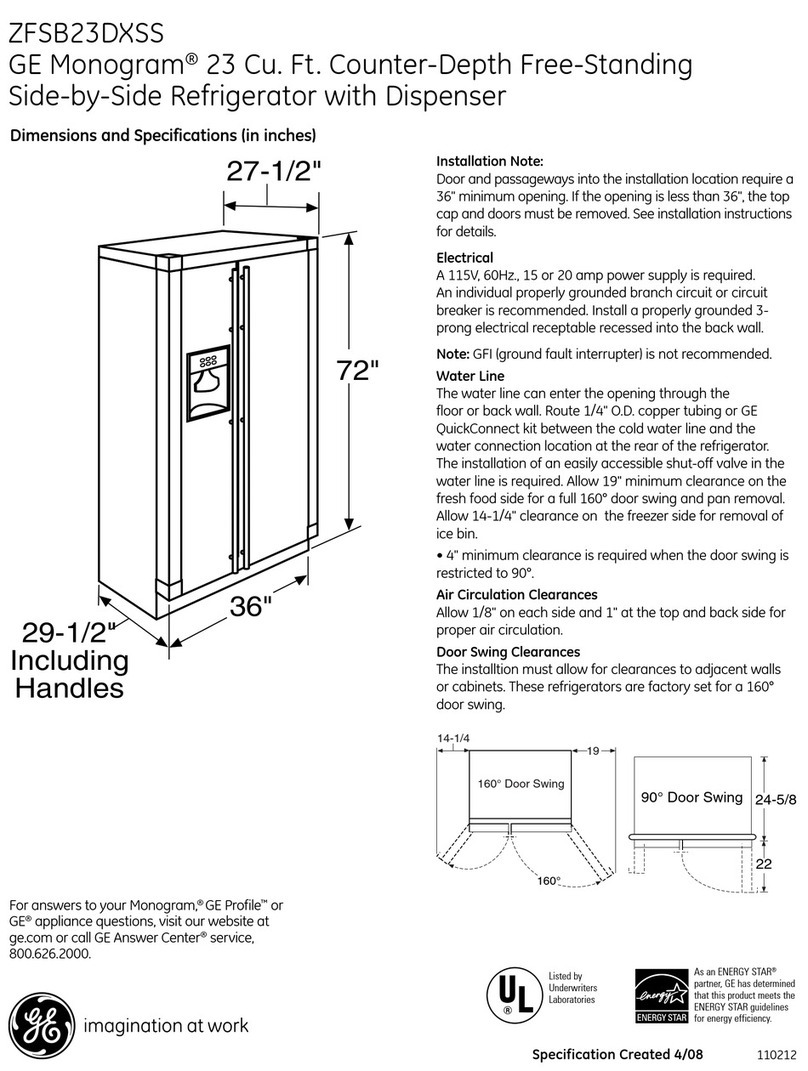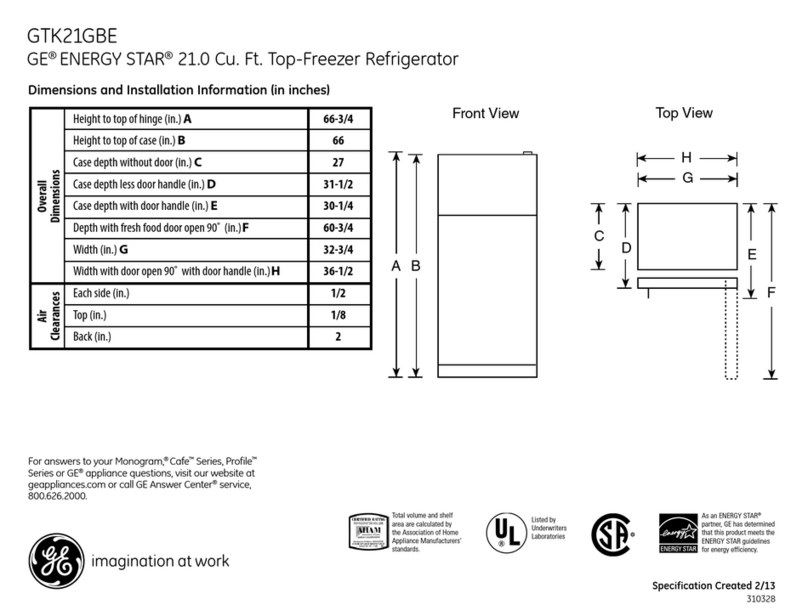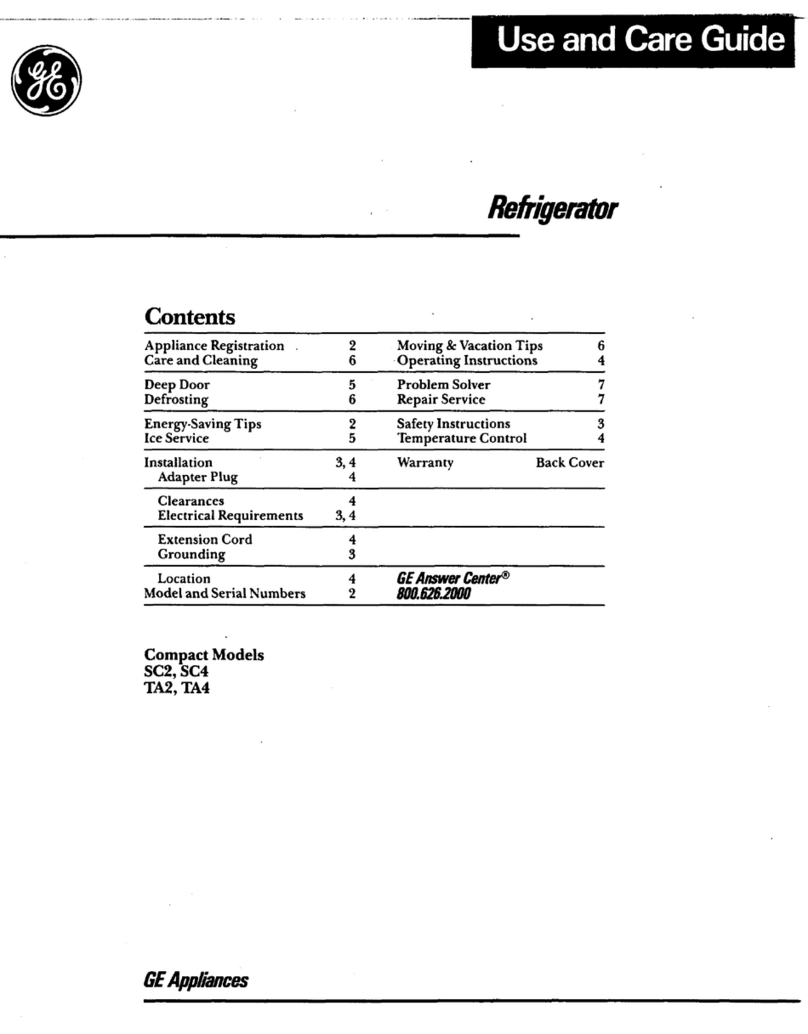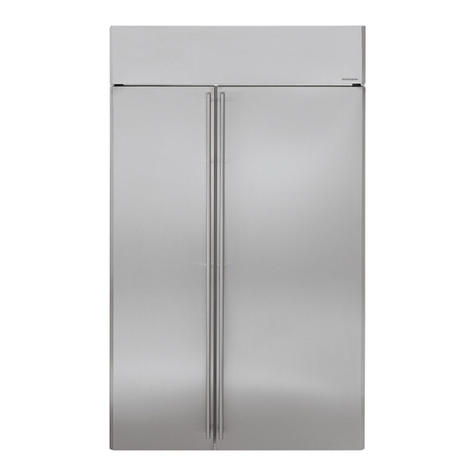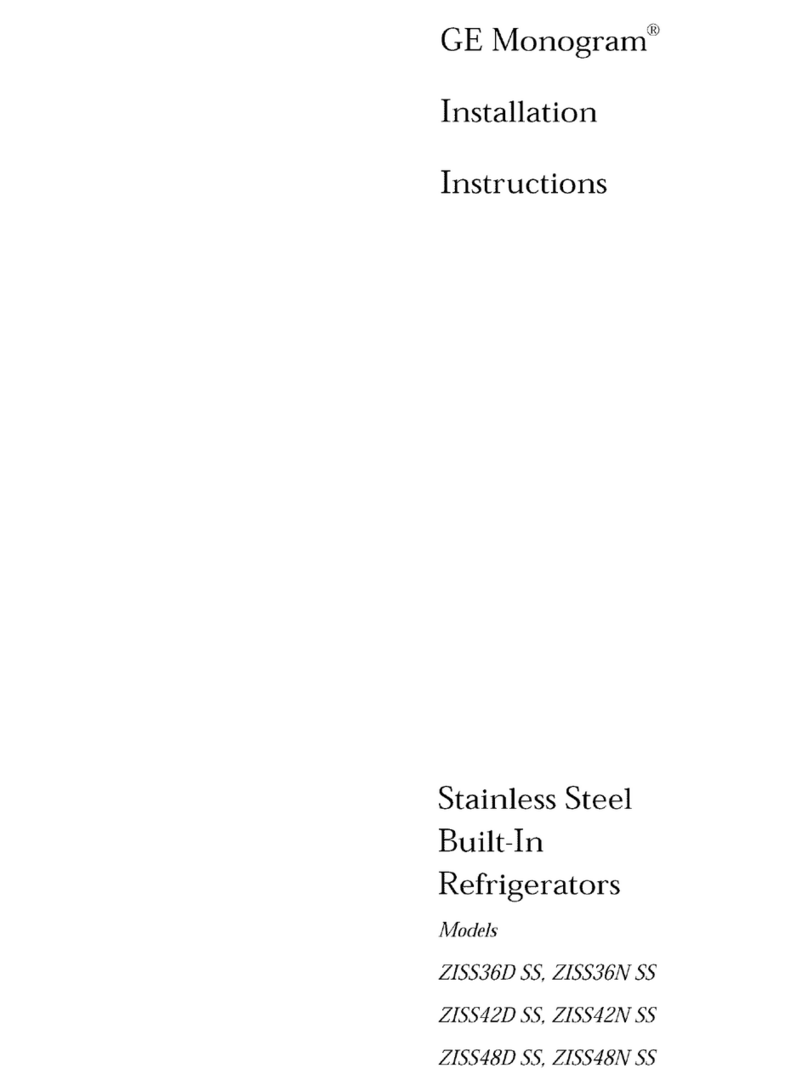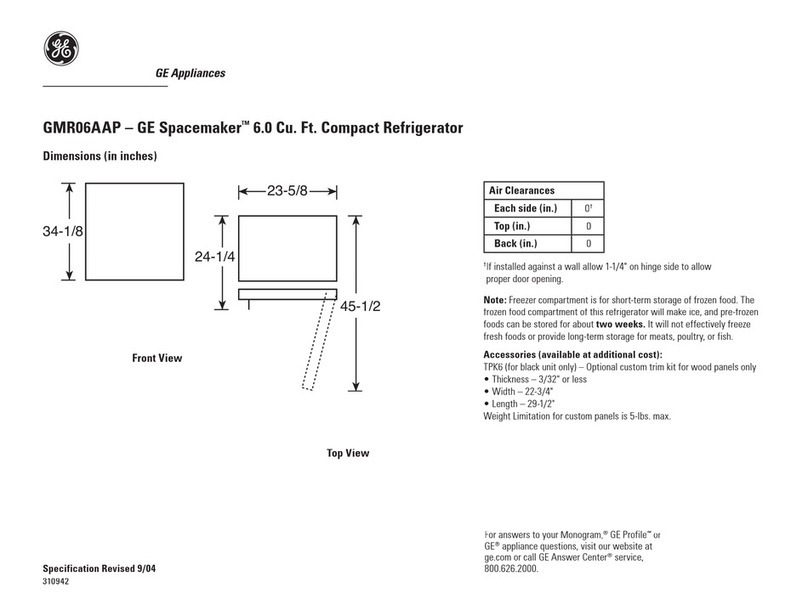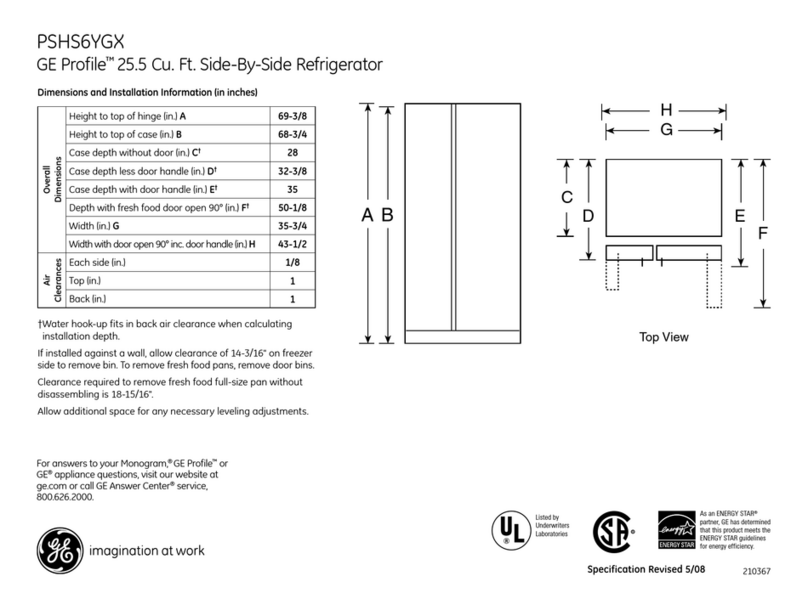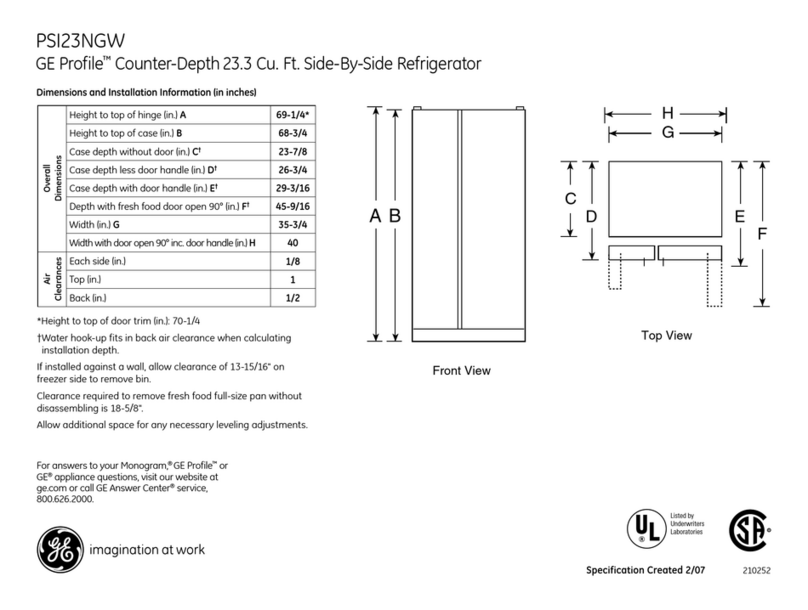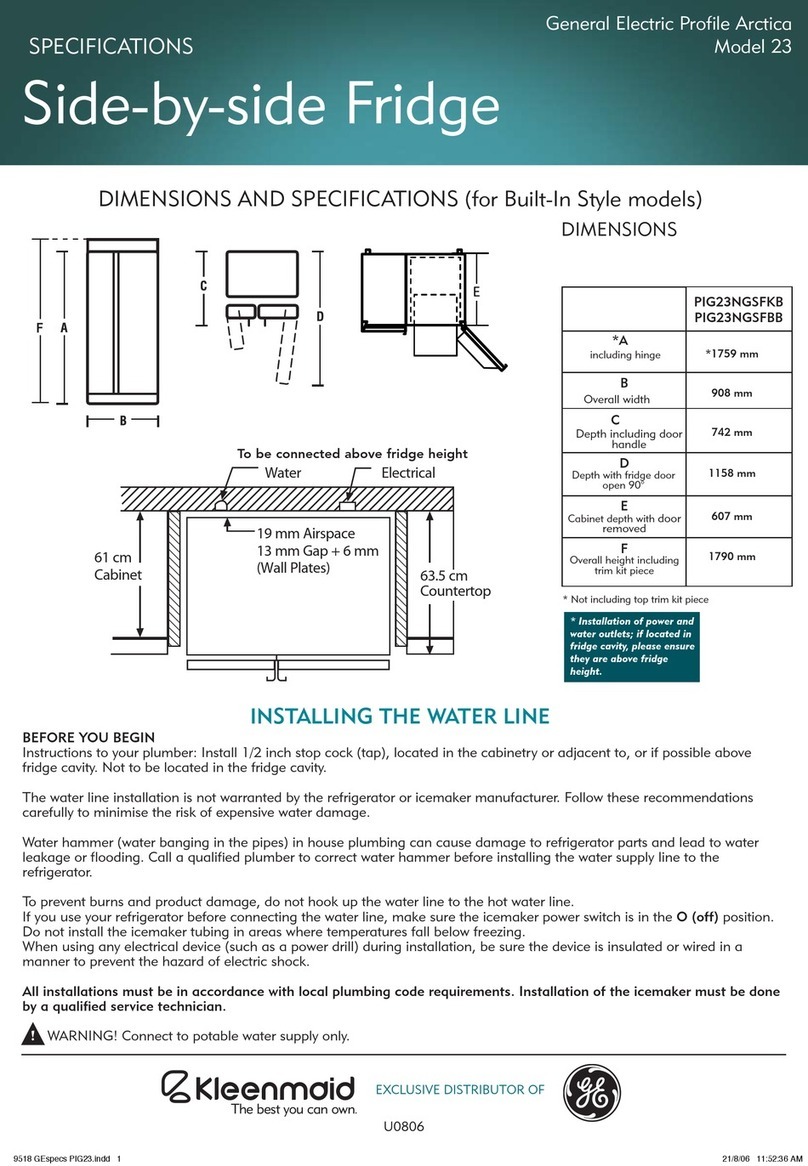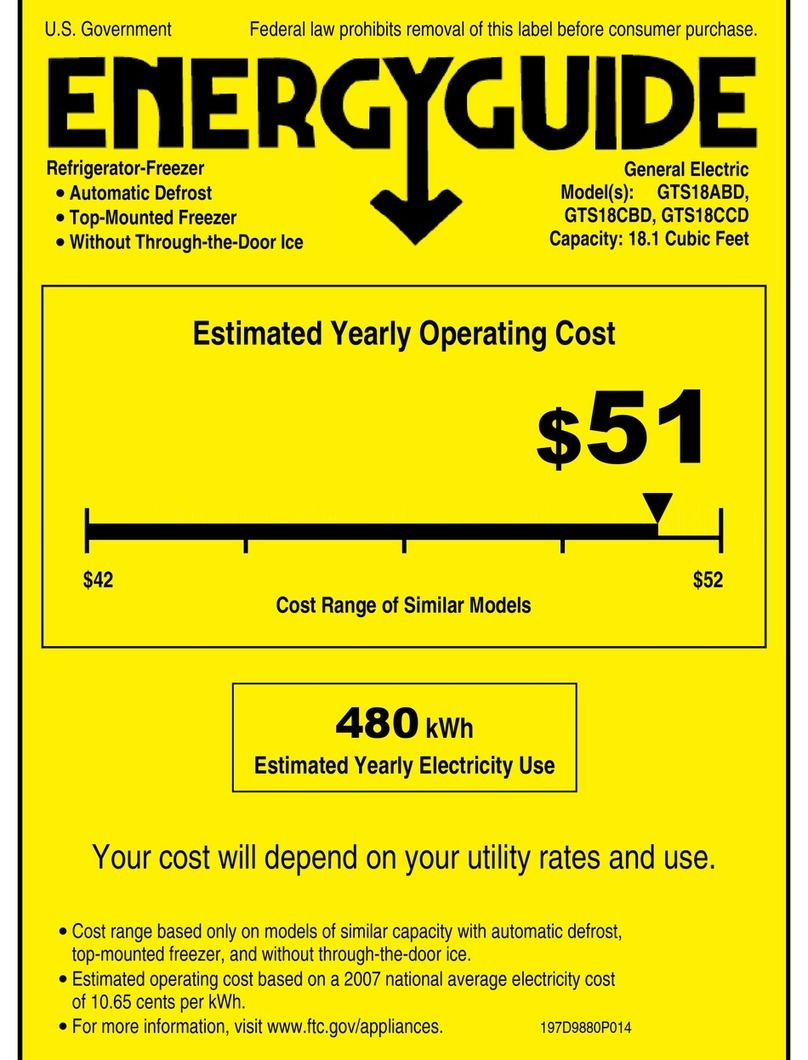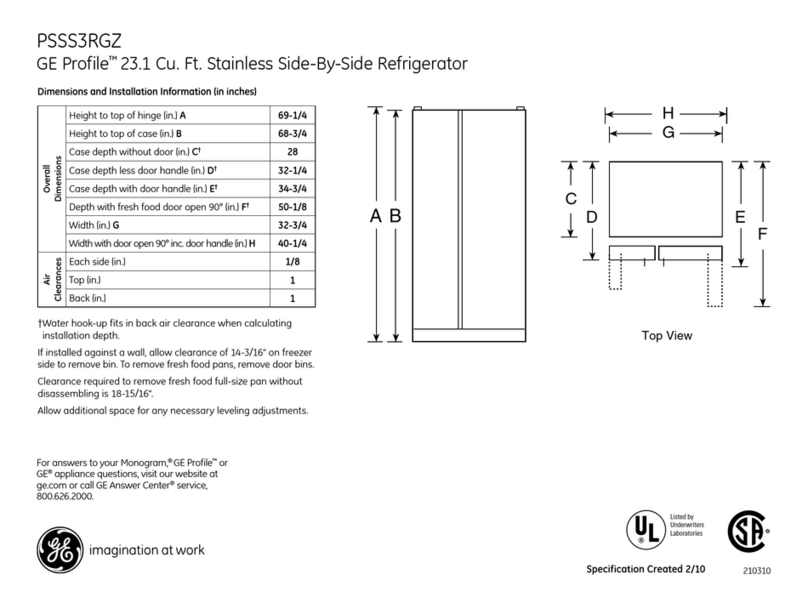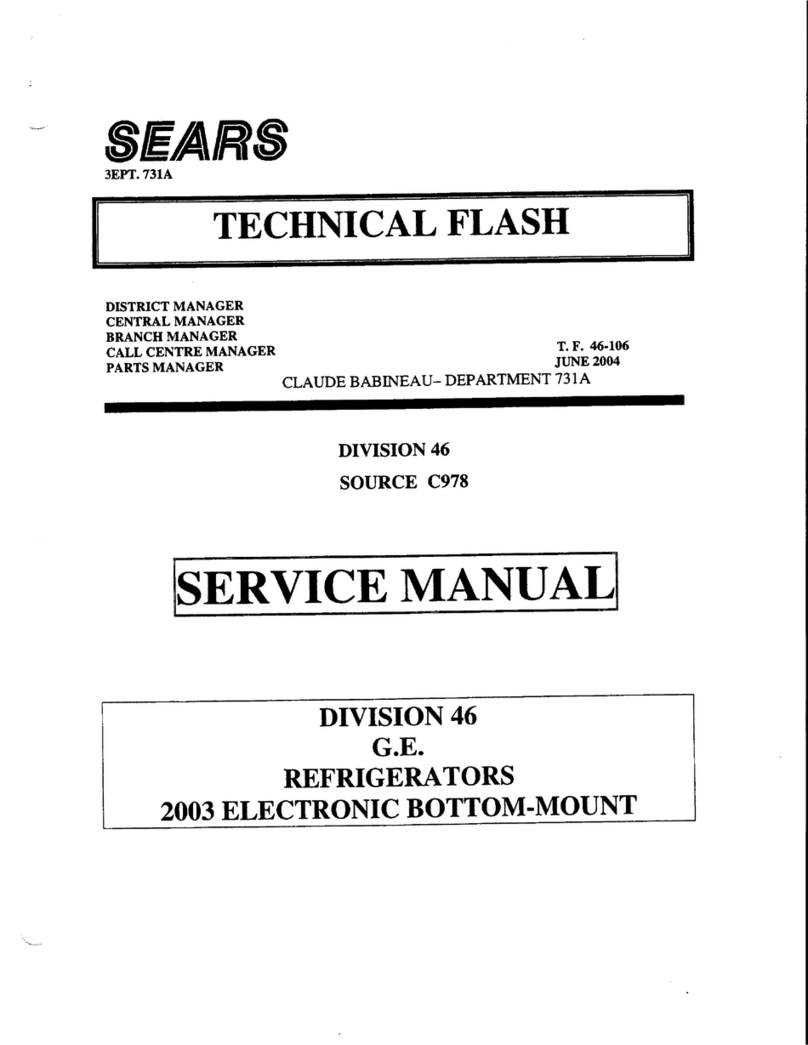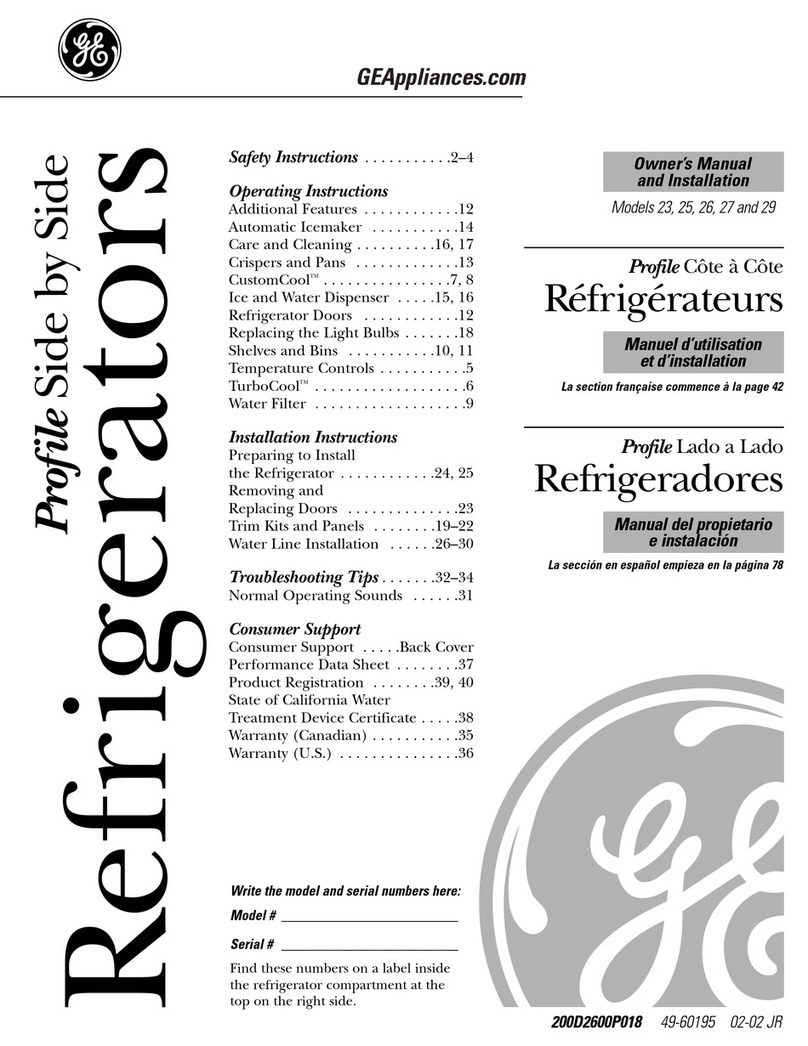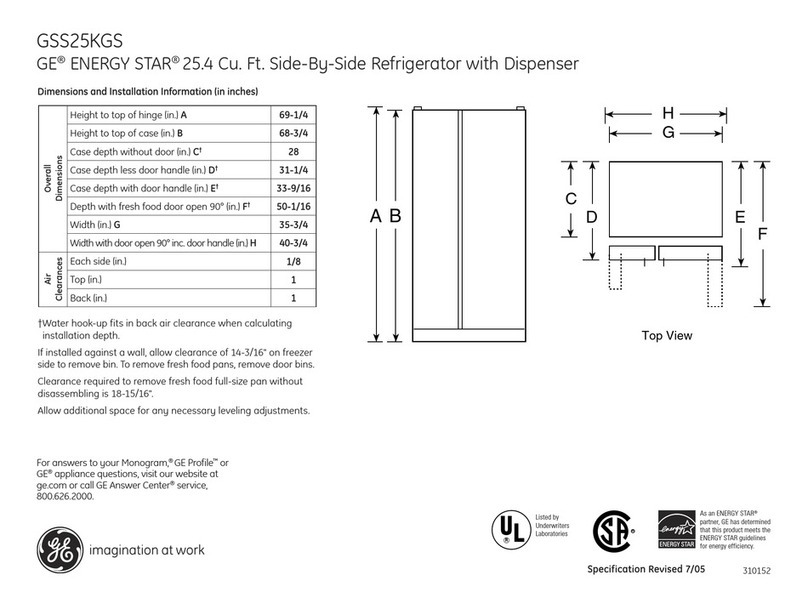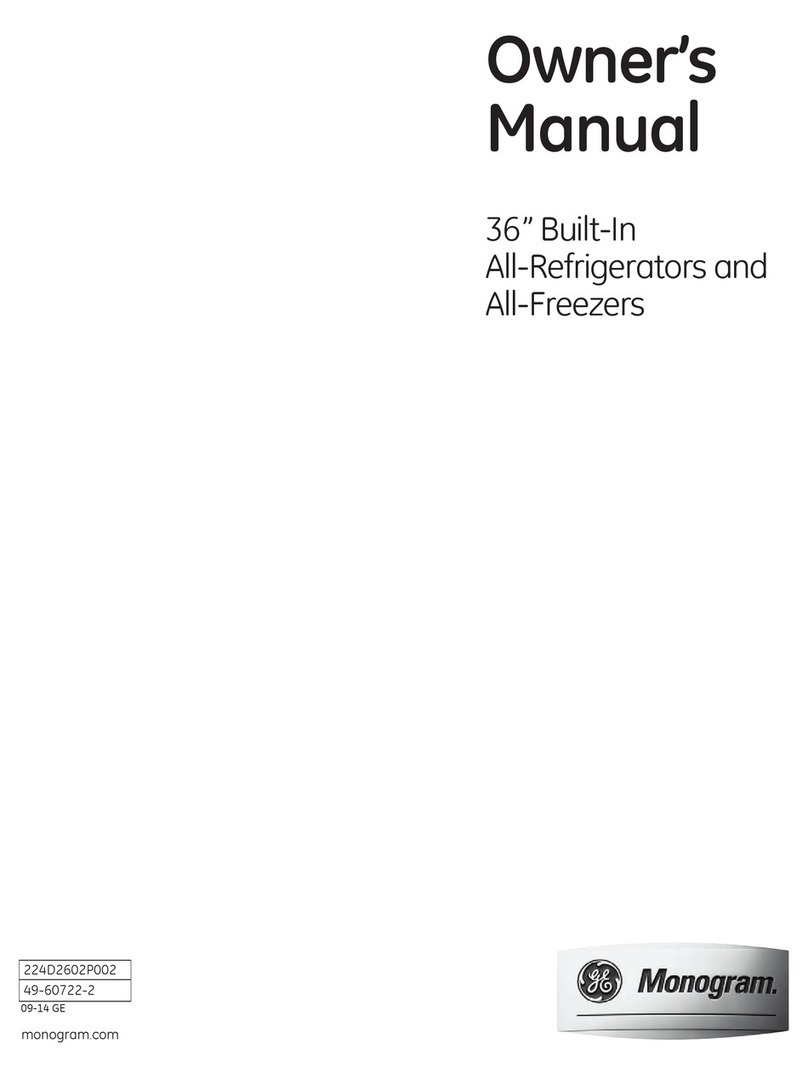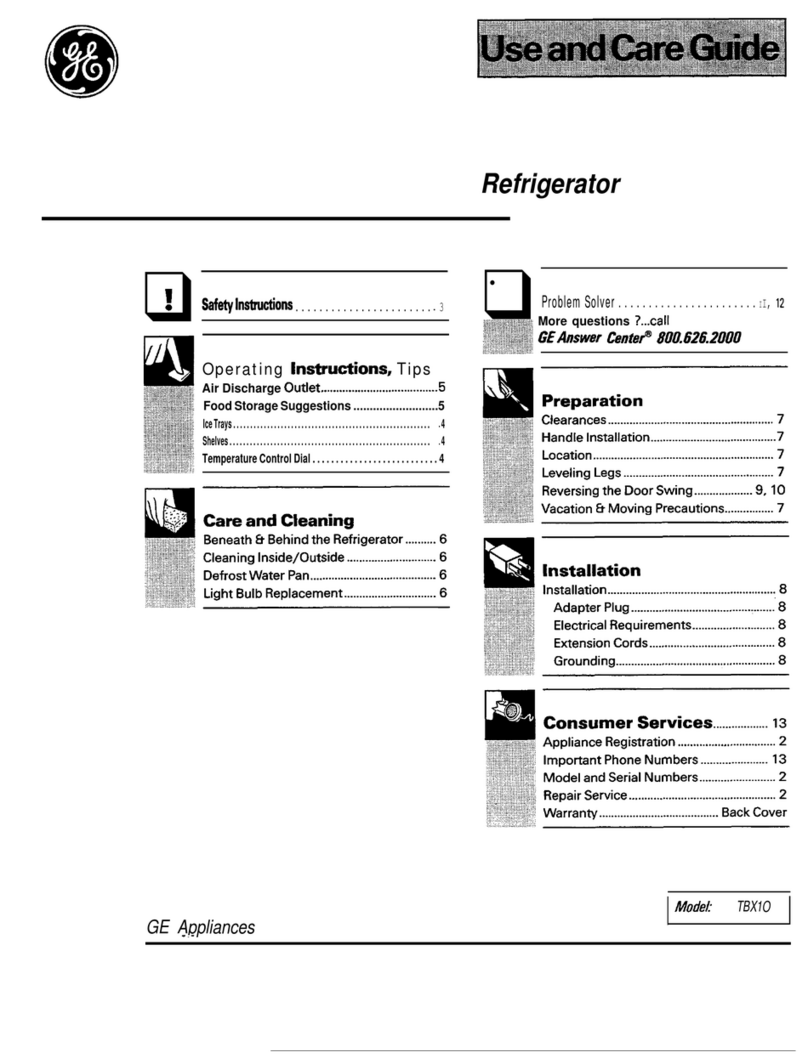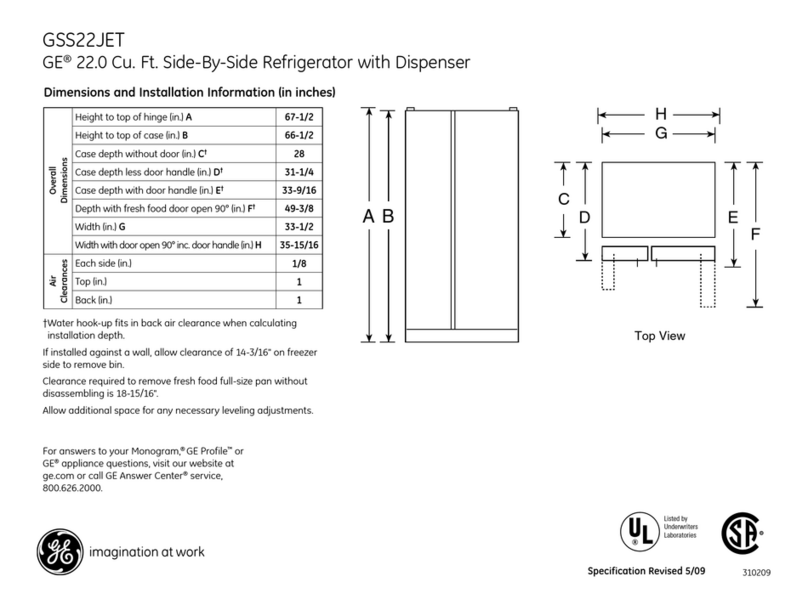
GEAppliances.com
3
WARNING ([SORVLRQ+D]DUG
Keep flammable materials and vapors, such as gasoline, away from refrigerator. Failure to do so can
result in fire, explosion, or death.
,167$//$7,21
'RQRWXQGHUDQ\FLUFXPVWDQFHVFXWRUUHPRYHWKHWKLUGJURXQGSURQJIURPWKHSRZHUFRUG
)RUSHUVRQDOVDIHW\WKLVDSSOLDQFHPXVWEHSURSHUO\JURXQGHG
The power cord of this appliance is equipped with a 3-prong (grounding)
plug which mates with a standard 3-prong (grounding) wall outlet to
minimize the possibility of electric shock hazard from this appliance.
Have the wall outlet and circuit checked by a qualified electrician to
make sure the outlet is properly grounded.
Where a standard 2-prong wall outlet is encountered, it is your personal
responsibility and obligation to have it replaced with a properly
grounded 3-prong wall outlet. Do not use an adapter.
The refrigerator should always be plugged into its own individual
electrical outlet which has a voltage rating that matches the rating
plate.
A 115 Volt AC, 60 Hz, 15- or 20-amp fused, grounded electrical supply
is required. This provides the best performance and also prevents
overloading house wiring circuits which could cause a fire hazard from
overheated wires.
Never unplug your refrigerator by pulling on the power cord. Always grip
plug firmly and pull straight out from the outlet.
Repair or replace immediately all power cords that have become frayed
or otherwise damaged. Do not use a cord that shows cracks or abrasion
damage along its length or at either end.
When moving the refrigerator away from the wall, be careful not to roll
over or damage the power cord.
&211(&7,1*(/(&75,&,7<
WARNING (OHFWULFDO6KRFN+D]DUG
Plug into a grounded 3-prong outlet
Do not remove the ground prong
Do not use an adapter
Failure to follow these instructions can result in
death, fire, or electrical shock.
SAFETY (CONT.)
WARNING 6XIIRFDWLRQDQGFKLOGHQWUDSPHQWKD]DUG
Remove fresh-food and freezer doors from the refrigerator, prior to disposal. Failure to do so can
result in child entrapment which can lead to death or brain damage.
IMPORTANT:
Child entrapment and suffocation are not problems of the past. Junked
or abandoned refrigerators are still dangerous even if they will sit for
“just a few days.” If you are getting rid of your old refrigerator, please
follow the instructions below to help prevent accidents.
%HIRUH<RX7KURZ$ZD\<RXU2OG5HIULJHUDWRURU)UHH]HU
Take off the fresh food and freezer doors.
Leave the shelves in place so that children may not easily climb
inside.
Refrigerants
All refrigeration products contain refrigerants, which under federal
law must be removed prior to product disposal. If you are getting
rid of an old refrigeration product, check with the company
handling the disposal about what to do.
WARNING 5D5HIULJHUDQW
7KLVDSSOLDQFHFRQWDLQVLVREXWDQHUHIULJHUDQW5DDQDWXUDO
JDVZLWKKLJKHQYLURQPHQWDOFRPSDWLELOLW\+RZHYHULWLVDOVR
FRPEXVWLEOH3OHDVHDGKHUHWRWKHZDUQLQJVEHORZ
When handling, installing and operating the appliance, care should
be taken to avoid damage to the refrigerant tubing.
Servicing shall be performed by factory-authorized service personnel
and component parts shall be replaced with manufacturer-
authorized replacement components.
3)Refrigeration products contain refrigerants, which under federal
law must be removed prior to product disposal.
Keep ventilation openings in the appliance enclosures or in the built-
in structure clear of obstruction.
Do not use mechanical devices or other means to accelerate the
defrosting process.
Do not damage refrigerant circuit.
Do not use electrical appliances inside the food storage
compartment of the appliance.
3523(5',6326$/2)<2852/'5()5,*(5$725
READ AND FOLLOW THIS SAFETY INFORMATION CAREFULLY.
SAVE THESE INSTRUCTIONS

